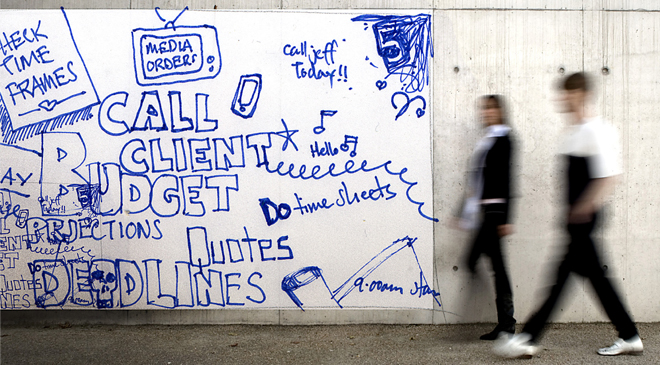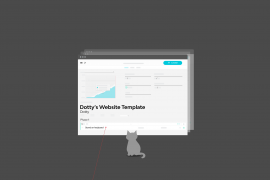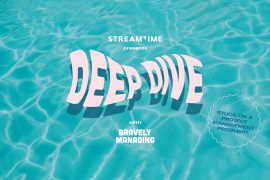A normal-sized silicon chip (less than 8mm wide) stores more information than the ENIAC computer – which occupied a city block. The ENIAC computer of 1949 was 80 feet long and weighed 30 tons. A cheap PC off the shelf at some bargain computer warehouse bought today would be over 50,000 times faster and store more than a million times the information.
The increase in technology has been nothing short of epic. The first VCR (made in 1956) was the size of a piano, and took years to create and build. Today, there are more than a billion transistors manufactured every second!
We always knew the world was amazing. It has been since life began. Technology still hasn’t begun to catch up with the wonders of nature. You blink over 10 million times a year. Your heart beats over 100,000 times a year. By the end of the day your feet will be 5 to 10% bigger than the start of the day. It’s a lot to process; it’s even more to cope with.
We live in a world where 80% of the products that will be sold in 20 years’ time haven’t even been invented. We find ourselves using computing technology that the supercomputers of yesterday could only dream of. We conceive and produce creative work using software so advanced it makes anything you can think of a digital reality.
And yet, our screens and desks are filled with Post-It notes and cumbersome diaries. Our timesheets are scribbled loosely on random sheets of paper. Our financial reporting is delivered many months too late, via an accountant who doesn’t know how to help creatives make solid strategic decisions for their business.
Trying to get a creative person to fill in timesheets has always been one of life’s true challenges. It’s just as difficult to get an Account Manager to fill in the detail they discussed with the client in the two-hour briefing session. And tracking every job and project effectively through the studio, ensuring all deadlines are met and the client’s expectations are exceeded, is also a potential minefield of chaos and struggle. And yet, these three functions are paramount to any successful business and can mean the difference between profit and the poorhouse.
Creative companies sell time. They often have other add-ons and gain commission from other sources they onsell, but essentially time is the foundation of the business. This isn’t unlike most service professions, such as lawyers, tradespeople and accountants. And yet, unlike those other professions, the creative often leaves the paperwork till last, invoicing at 2am after the end of the month has finished, with most consumables and disbursements not finding their way onto the job sheet.
Sounds like a business not at full potential? If you said no, you would be right. It isn’t. Nowhere near it. And yet for at least 80% of creative businesses, this is the norm. If only the creative person knew how much time they were slipping. If only the business knew how profitable each client was and where their staff spent most of their time. If only they realised how much each little incidental cost added up to over a year.
Up till now, one of the main reasons technology has failed to address this problem has been its functionality and misfit in a creative context. Drawing, 3-d modelling, film editing and web development software packages have all been tailored to the creative mind, as have all the amazing hardware they run on. The design aesthetic is in harmony with the surrounding environment of the studio. Everything fits in this space, and the items that don’t fit stay well away.
Looking for an example of functional products that don’t fit the design aesthetic? Try accounting and administration software. If a tool thinks it has a use in a creative environment, it has to earn its place. Creatives solve problems for their clients every day. They are trained to look at a product or service and see its flaws and strengths. They know how to provide solutions to everyday problems, which is why they demand that from the companies that aim to sell to them. Apple computers understood this years ago. Sadly, most timesheet and production management software hasn’t. It has paraded itself like a wannabe – the social misfit on the edge of the party, holding a beer, trying to look like they belong.
The whiteboard moves aside
Finally, creative people have begun to look at administrative tools for their industry, which is why products like Streamtime have come of age. Never before has there been a solution that truly understood how a day works in a creative studio. Never before was there a solution that sat alongside the rest of the designer’s software and worked in the same intuitive way. Finally, creatives have a product designed by creatives.
In the same way the best software almost seems to know what you are wanting to do, Streamtime delivers a logical left-to-right way of tracking a job or project through the studio. It provides a place to collate all client information and deliver it in a way that all staff can access and take advantage of. The whiteboard used to be the centre of the studio, but its inability to be kept up to date and stop triple handling of information has meant it has been left behind. Today the new way is one location for all your critical information. Timesheets are now easy to follow and quick to use. Creatives now revel in the chance to electronically tick off a task and pass it on the next person.
But the main benefit in having one portal for all information is in the reporting capabilities. With all this time-, job- and project-based information and client data, the real-time reporting features mean you can analyse any staff member, any client or any job at any time. The way to make great future decisions for your business is by understanding the past and the present. If you don’t monitor, you can’t manage. Oh, and don’t forget the best benefit: you can actually go home and rest at the end of the day, knowing that technology is helping you keep on top of everything. Your partner (and kids) may just appreciate that…








